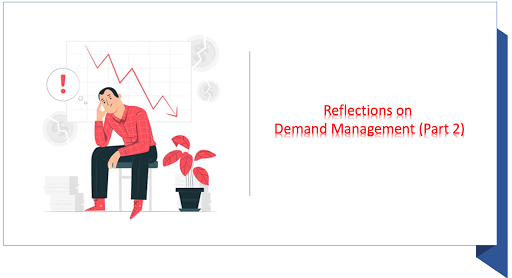This method can be used for both Historic and Futuristic.
For the case of immediate response queues such as Inbound, Chat, Social Media etc., we can use the Erlang formula to calculate the occupancy as mentioned below.
=Utilization(Agents, Calls per Interval, AHT)
There are many methods to calculate occupancy for Deferred Media out of which the Time and Motion Study is the main method.
Time and motion study is a work measurement technique for recording the times of performing a certain specific job or its elements carried out under specified conditions.
Apart from just the Volume, AHT and FTE, the Intraday Pattern and the SL Goal also plays a major role in Occupancy.
However, irrespective of how we calculate and what we call it as, it is the same and can be termed as “Occupancy”.
But, did you know apart from this, we have other occupancies which are calculated and mainly comes from a Revenue perspective?
Those are called Staffed, Actual and Billed Occupancy
For us to understand those occupancies, we need to first look at a capacity planner.
The main reason for a capacity planner is because that is the easiest way to know how future looks like.
If anyone is not aware of what a capacity planner is, there is a wonderful blog written on it and can be accessed using the link below.
I’ve attached a sample capacity planner at the end of this blog where the calculations are more elaborated in context with the topic here.
Make sure to check the planner.
There are some major inputs required for us to calculate the occupancy that could be taken from the capacity planner.
Let’s deep dive into each one of them to understand more.
To build a capacity planner, occupancy is used as a input for us to calculate the FTE Required and the call capacity.
This occupancy comes out of any of the methods mentioned above and are mainly calculated using the Forecasted Volume and Target AHT.
This occupancy is termed as “Staffed Occupancy”.
I just took the weighted average against the Projected FTE to find out the overall Staffed Occupancy.
The main agenda of building a capacity planner is to make sure we don’t have any Head Count deficit in the future.
For this, we bring new hire batches which could be due to attrition back fills or Ramp up.
However due to some restrictions sometimes, we end up having more or less than the required.
When we have excess staff, the call capacity will be higher than the forecasted volume, but in an ideal scenario we cannot handle more than the forecasted volume.
In the same way, when we have staffing deficit, the call capacity will be lesser than the forecasted volume and we can handle only those volumes.
Of course, we can handle more calls by using support staff or by overtime. Let’s not consider that for this context since they are planned mainly on a real time basis.
So, whichever is minimal between the forecasted volume and the call capacity would be called as “Billable Volumes”.
Also, the newbies go through a AHT Learning Curve to get accustomed to the process. Due to this, the overall weighted AHT will be higher than the Target AHT.
Due to the variance between the forecasted volume and call capacity and between overall AHT and Target AHT, the occupancy is impacted.
It could either increase or decrease when compared to the Staffed Occupancy on a monthly basis.
But, the Actual Occupancy will definitely be lower than the Staffed Occupancy on a overall basis.
So to calculate the Actual Occupancy, below are the required inputs.
- Minimum Volume between Volume Forecast and Call Capacity (Billable Volume)
- Weighted AHT which includes the Learning Curve
- Projected FTE
- Shrinkage
As told earlier, the Weighted AHT will always be higher than the Target AHT due to the new hire AHT Learning Curve.
This necessarily doesn’t mean that we can bill the client at the Weighted AHT.
Therefore only Target AHT can be used and is called as “Billable AHT”.
That is the only difference between the calculation of Actual and Billed Occupancy where instead of using Weighted AHT, we use the Target AHT to calculate the Billed Occupancy.
So to calculate the Billed Occupancy, below are the required inputs.
- Minimum Volume between Volume Forecast and Call Capacity (Billable Volume)
- Target AHT (Billable AHT)
- Projected FTE
- Shrinkage
The Billed Occupancy will definitely be lower than the Actual since the AHT is lesser.
If you look at the attached Capacity Planner for the numbers, you can see a decreasing trend between Staffed, Actual and Billed in a descending order.
I’ll end this up with a beautiful quote.
As always, thank you for reading.






Responses